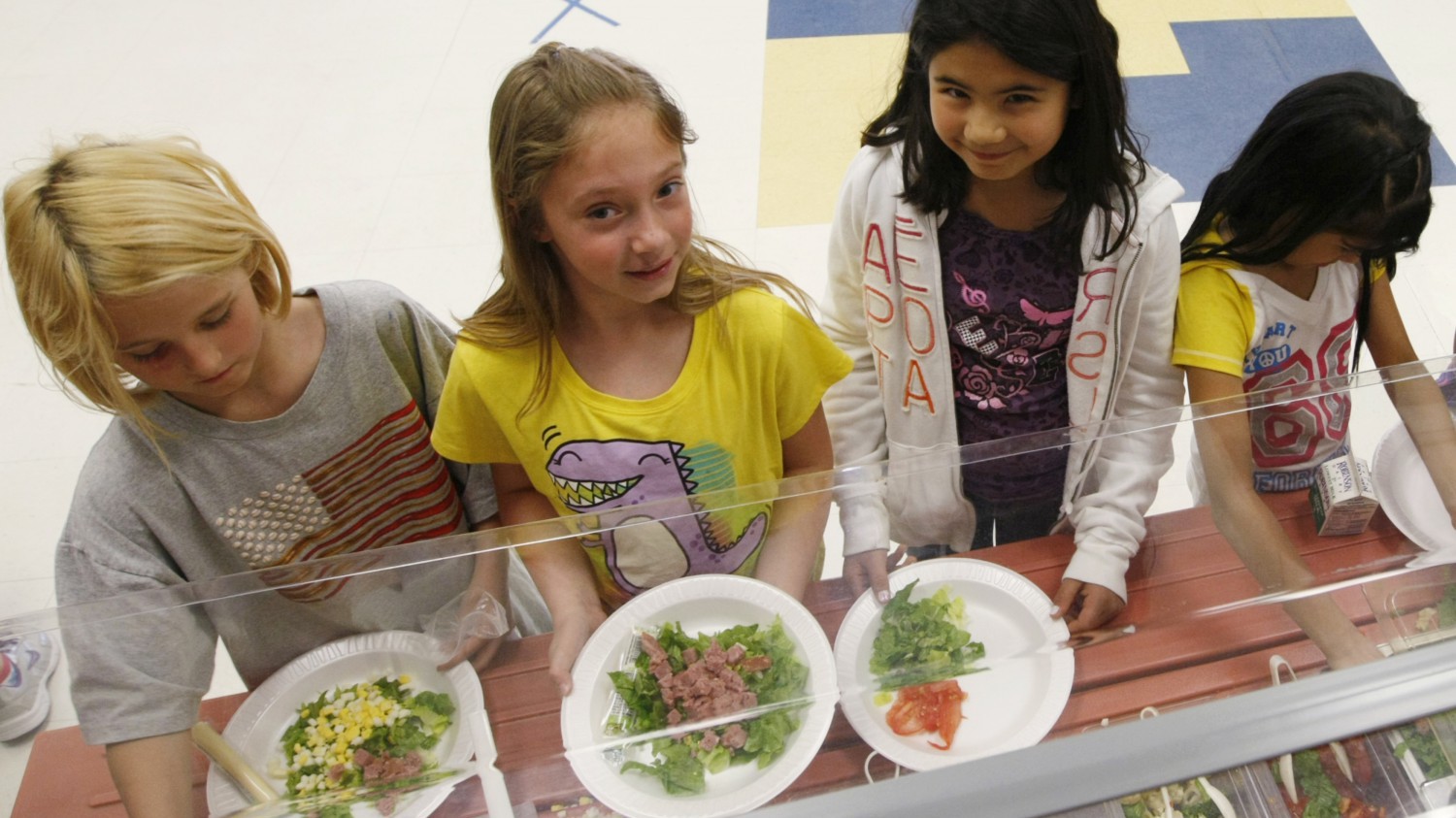Watch any cartoon or kid-centered sitcom long enough and you’ll come across a lunchroom scene where the little ones are served a bubbling, inorganic-colored pile of mystery by an unsympathetic, hairnet-sporting drone. For many kids, that lunch-room horror was a reality. As a result, The Healthy Hunger-Free Kids Act was passed to improve the quality of school lunches and combat childhood obesity. This act has weathered heated criticism over the past five years. There have been outcries from school cafeterias, politicians on the right, and parents. Unflattering photos of lunch trays containing meals not even Oliver Twist would touch have been splattered across the web with the hashtag #ThanksObama. One student in Wisconsin even organized a boycott to shed light on the shabby state of school lunches.
Despite this tumult, there’s some new evidence that the act is making things better. A poll conducted by W.K. Kellogg Foundation shows that people support the changes made in school lunch programs because of the Healthy Hunger-Free Kids Act.
The poll, of 1,200 adults nationwide, showed that 86 percent believe school nutrition requirements should be strengthened or kept the same. Additionally, 67 percent say the nutritional quality of food in their local public schools is excellent or good, a huge increase in the past five years. When the foundation asked the same question in 2010—before current nutrition standards were enacted—only 26 percent said the nutritional quality was excellent or good. Another bit of data: 88 percent of Americans somewhat or strongly support increased government funding for farm to school programs. (58 percent strongly support it.) It would seem popular opinion is in favor of the Healthy Hunger-Free Kids Act, right?
The School Nutrition Association represents school lunch-program workers and has long argued that the healthy food requirements are too inflexible, but it had no quarrel with the survey. SNA representative Diane Pratt-Heavner started out by saying that the organization was pleased with certain aspects of the survey. For instance: “We’re glad to see respondents rating school lunch programs highly,” Pratt-Heavner said. But there is one caveat here: Pratt-Heavner said that the poll didn’t report on the unintended consequences these regulations have had on school lunchrooms — and the kids who eat in them — across the country.
The SNA would’ve liked the survey to show that the new chow has led to a decline in students eating it. And what do students eat instead, you ask? According to Pratt-Heavner, they resort to soda and chips and fast food, which is not hard to believe; the 16-year-old in me still begs for ice cream and pizza for breakfast at least once a week. If the school lunch programs had less stringent restrictions, Pratt-Heavner insists, they would be able to provide more realistic, healthier options that kids might actually eat, but the restrictions make it very difficult for kitchens to prepare regional favorites — biscuits in the south, tortillas in the southwest, and bagels in the northeast.
While egg-and-cheese biscuits and tacos might be more popular with teenagers, a recent study published in Childhood Obesity found that the new meal regulations (the ones SNA doesn’t like) have increased overall food consumption, particularly in regard to fruits and vegetables. Before the regulations were implemented, 53.7 percent of students selected fruit; after the new rules went into effect, 70.6 percent were selecting fruit. Overall, “there was nearly universal acceptance of the new entrée selections, and plate waste dropped significantly.” While some students might still be grumbling about the options, most students seem to be handling the healthier food just fine.
Margo Wootan, director for nutrition policy at the Center for Science in the Public Interest, told me the restrictions aren’t as bad as the SNA claims. “Congress gave states the ability to grant waivers for school districts that are having a hard time finding whole grain products such as grits, biscuits, and pasta,” Wootan said. Still, there are issues with the current system, Wootan agreed. If schools can’t find whole grain products, then they should receive more support from other schools and the USDA.
Despite its current flaws, the Healthy Hunger-Free Kids Act has made some major improvements on the diets of our young. The tide has shifted: if this survey represents national opinion, then school nutrition reform is clearly what people want, and they’re happy with the results thus far.


